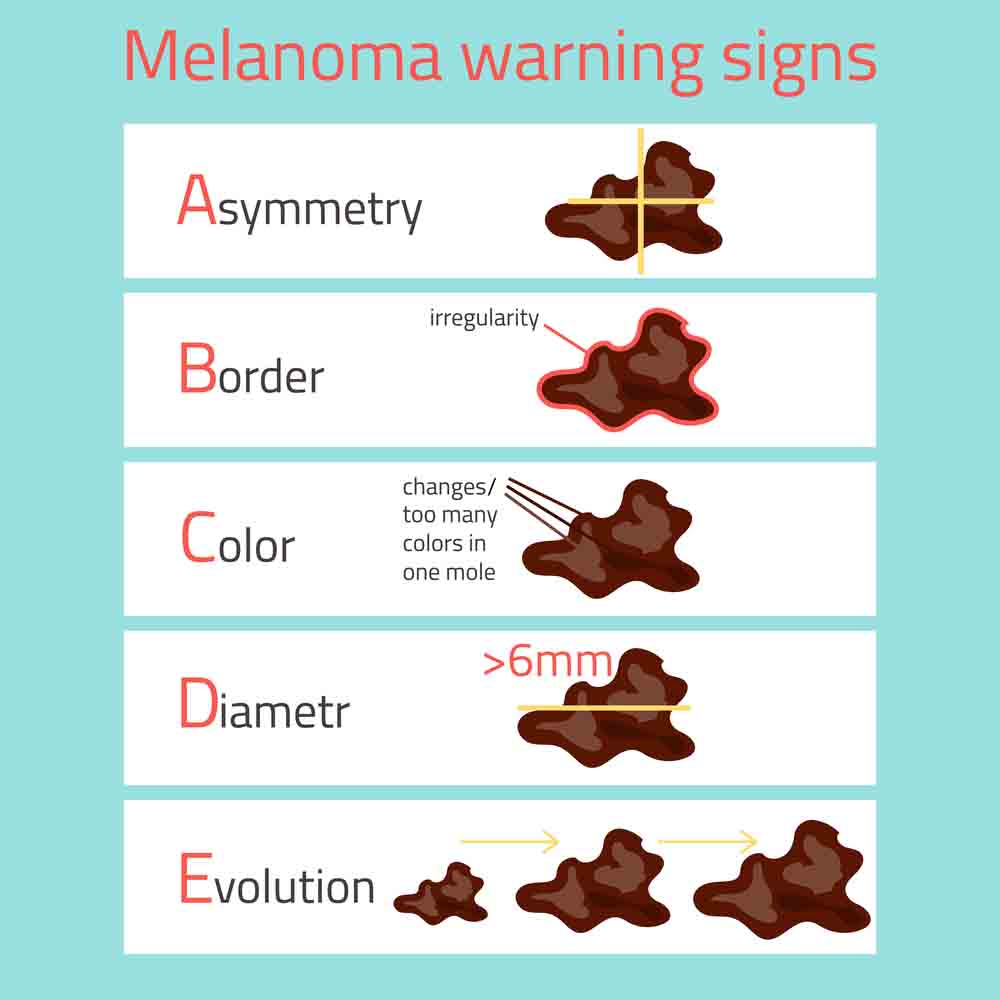Melanoma is a misnomer used to describe a malignant tumor of the melanocytes, the cells that give color to the skin. It is also known as malignant melanoma. For benign lesions of the melanocytes, we can use the term mole or pigmented nevus.
Melanocytes are present in the stratum basale, the deepest layer of the epidermis. They are also present in the eye as a retinal pigment, in the leptomeninges, heart, bones, lungs, anterior pituitary, adipose tissue, and in the inner ear. Their function is to synthesize melanin, a light absorbent. The more melanin in the skin, the darker it will be. In the retina, it absorbs excess light and prevents the scattering of light. In the inner ear, it helps in protecting us from noise-induced hearing loss.
Melanoma is less common than other malignancies of the skin, but it is more severe and life-threatening. Thousands of acquired mutations cause melanomas, and they are caused by UV exposure. Other risk factors include inheritance, fair skin, and caucasian race. 25 to 30% of malignant melanomas arise de novo (in previously normal skin) while the rest of the cases arise from a preexisting lesion. Clinical types of melanoma are superficial spreading melanoma, nodular melanoma, lentigo maligna melanoma, and acral lentiginous melanoma.
Most cases are seen in the 3rd and 4th decade of life or later. Melanomas are rare before puberty but can be seen in children. Prevalence is equal in males and females. People with fair skin complexion and red hair are more susceptible.
There are warning signs to detect melanoma and a few signs and symptoms we should notice:
ABCDE signs

The warning signs of malignant change in melanoma are expressed in ABCDE where A stands for asymmetry, B stands for border, C stands for color, D stands for diameter, and E stands for evolution of preexisting lesion. We are going through each one in the following sections.

